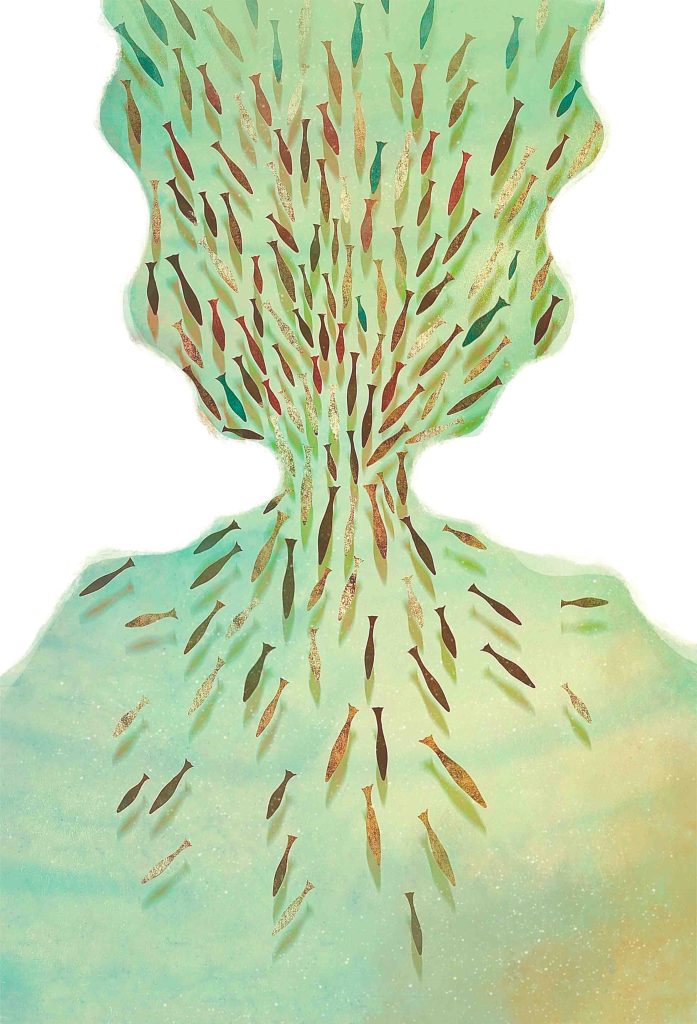
There are animated parties in the forest with a motley bunch of attendees. Their colours and calls are hidden among the trees and one may not notice them immediately. Pay a little more attention though, and one can see birds of various hues and sizes making their way through the forest in a palpable buzz of activity. There are birds that carefully pick out insects from the bark and leaves of trees and others swoop down on flying insects in acrobatic dives. Some birds have more of their own kind for company, while others are loners that tag along with the group.
Mixed species bird flocks have been reported all around the world, and form the basis of a new card game called ‘Flocks!’ developed by an unlikely duo. An ecologist and a game designer put their heads together to create a game where players build their own mixed species bird flocks using rules derived from ecological principles. It has the potential of finding its way among a growing list of games that are anchored in science without compromising on the fun.
The founders of Flocks! are Priti Bangal, a Ph.D. student at the Centre for Ecological Sciences, Indian Institute of Science, and Prasad Sandbhor, a National Institute of Design alumnus and freelance game designer – both based in Bangalore. They always wanted to work on a game or material which would connect natural phenomena with play, and wanted to bring Priti’s PhD work to more people, make it interesting for them to understand. This motivated Prasad to visit Priti in Anshi, when she was carrying out fieldwork.

The current version of the game consists of a set of cards, each of which has an illustration of a bird species, its name, group size, a cartoon depicting its feeding strategy – gleaning or sallying, its position in the forest canopy and the number of points assigned to it. There are symbols identifying special cards with predator species, and drongos that alarm call on detecting predators in nature. The cards represent 12 species including gregarious, nongregarious and predatory birds. The game is played by two-five players and starts with dealing each player two gregarious and three non-gregarious cards, and shuffling the restwith predator cards to form a deck. A mixed species flock starts with a gregarious species card, and players take turns to build their respective flocks by adding one species at a time, gaining points based on the species and its number. As players replenish their cards from the deck in each turn, drawing a predator card threatens the flock by eliminating species, which can be rescued by the presence of a drongo in the flock. Players can declare a flock complete when it has at least two different species, and a player with the highest number of points in the end wins the game. Players strategize based on the number of flocks they build at a time and their composition.
The bird species and their traits that could be included in the game were immediately clear, but they also included aspects of their biology such as feeding, energy depletion and habitat choice in their earliest versions. Eventually, they threw away these details in pursuit of a simpler game structure and tested it immediately. Players were randomly dealt cards, with a species listed on each, and took turns to build a flock by adding species using ecological rules. One such rule derived from species biology states that a species added once, singly or in a group, cannot be added to a mixed species flock again. As the player picks a new card from the deck in each turn, drawing a predator card dispersed their flock.
At the end of the game, flocks were assigned points based on its attributes. Through several game testing sessions, they introduced rules that allowed better strategizing and gave players more control of play. In the final version, they assigned points to each species, allowing players to earn rewards as they added species to flocks in progress. This made the game more engaging to players, and more liberating in terms of the kinds of flocks one could form, moving closer to natural observations of mixed species bird flocks. Friends and family provided crucial help with illustrations, card design, and as unsuspecting game testers during this period.

“A game has mechanics, dynamics and aesthetics. It is a very serious business,” says Prasad. Mechanics has to do with game rules, the control given to players and the ultimate goal of the game. Dynamics refers to player choices, interaction between players, and the changes in game state that it brings about. Aesthetics refers to the entire multi-sensory experience of playing a game, he explains.
One unwritten rule while deciding on game rules was to not move away from scientific observations. They did not bring in anything alien for the sake of a story or engagement. They also point out that their goal was not to just educate people but to create a fun game where ecological rules surrounding mixed species flocks translate into game mechanics. In October 2018, they took their game to CHI PLAY – an international game research conference in Melbourne, Australia. They pitched their game by relating the ecology of mixed species bird flocks to the Mechanics-Dynamics-Aesthetics framework of game design. They were an unusual team, given that most participants came from game research labs involved in developing specific games and gaming algorithms. It was a validation of their efforts for over a year, and they could look ahead with possibilities.
The journey so far has inspired them to keep working on creating games and other playful formats like stories and comic books among others. They want to work on material that connects players to nature, making them curious enough to look around and observe natural phenomena.






